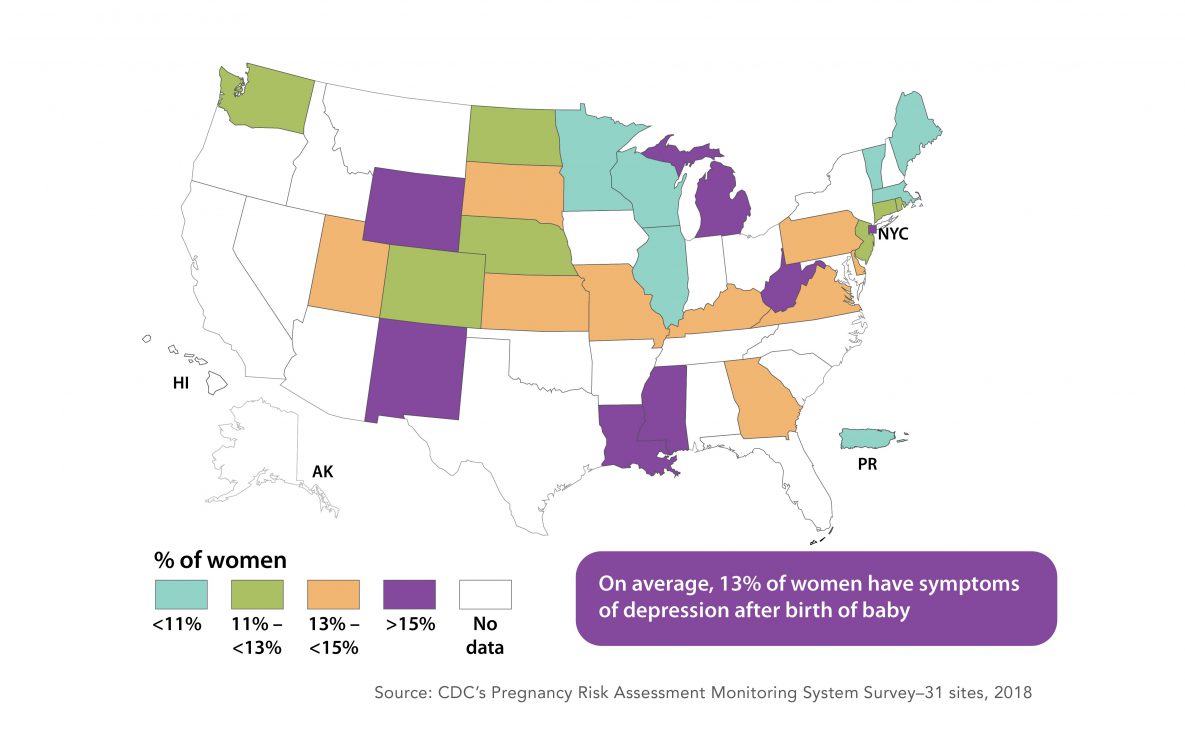Identifying Maternal Depression
Missed opportunities to support moms
1 in 8
1 in 8 women report symptoms of depression after giving birth.
20%
About 1 in 5 women were not asked about depression during a prenatal visit.
50%
Over half of pregnant women with depression were not treated.
Overview:
Pregnancy can be an exciting time in a woman’s life, but it can also bring challenges. Many women experience the baby blues after giving birth, and some women develop symptoms of depression that are more intense, long lasting, and can interfere with daily activities. Mothers with depression feel sad, hopeless, and have little interest in doing things they once enjoyed.
- Postpartum depression, which can last months or years after giving birth, can affect a mother’s ability to bond with and care for her baby.
- If left untreated, it can impact the mother’s health and may cause sleeping, eating, and behavioral problems for the baby.
- When maternal depression is effectively treated and managed, it benefits both mother and child.

Problem:
Healthcare providers are missing opportunities to ask women about depression.
- 51% to 91% of women were asked during a prenatal visit.
- 51% to 96% of women were asked during a postpartum visit.
Postpartum depression is more serious than baby blues.
BABY BLUES
- Very common
- Usually starts 2-3 days after birth
- May experience feelings of worry, unhappiness and fatigue
- Usually gets better on its own within 2 weeks
POSTPARTUM DEPRESSION
- Usually starts 1-3 weeks after birth
- Interferes with ability to do daily life activities
- Intense symptoms of sadness, anxiety, and hopelessness
- May include loss of interest in activities, withdrawing from friends and family, or thoughts of hurting self or baby
- Can occur up to a year after birth
- Usually requires treatment
Percentage of women with symptoms of depression after birth varies by state

THE WAY FORWARD ⟩⟩⟩
States can:
- Support programs that help providers screen and treat women.
- Use existing programs like Healthy Start, home visiting, and Title V Maternal and Child Health Services Block Grant to address maternal depression.
- Monitor measures related to maternal depression.
Healthcare providers can:
- Ask every pregnant and postpartum woman about symptoms of depression.
- Know local resources for referral to treatment and follow up.
Women can:
- Know that you are not alone.
- Tell your doctor about your symptoms.
- Ask about options for help.
Friends and families can:
- Know the symptoms of depression.
- Encourage women to talk with a healthcare provider about symptoms of depression.
- Offer emotional and practical support.
